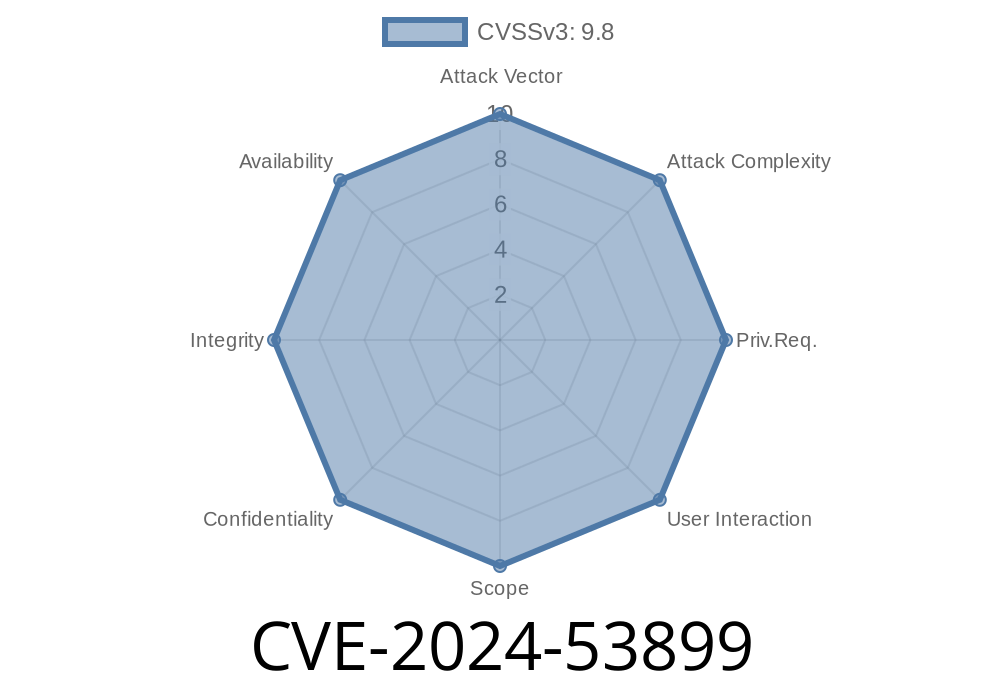If you’re a Python developer, you probably use virtualenv for managing your project environments. But did you know that before version 20.26.6, a quiet little bug—CVE-2024-53899—could give attackers a direct line to your shell? This post breaks down what happened, why it matters, and how it can be exploited, using real-world language and exclusive explanations.
What Is CVE-2024-53899?
CVE-2024-53899 is labeled as a command injection vulnerability in virtualenv, a popular tool used to create isolated Python environments. The bug exists in how virtualenv before version 20.26.6 generates activation scripts—those small scripts you source to activate an environment.
Here’s the root of the problem:
When virtualenv’s templates inject values (like the name of your environment) into activate, activate.fish, or similar scripts, they don’t quote certain strings correctly. If an attacker can control the name or path of the virtual environment, they might inject malicious shell commands.
> Important: This is not the same as CVE-2024-9287, which affects templates in a different way.
Where’s the Problem in Code?
Let’s look at a simplified example similar to the vulnerable code pattern found in old virtualenv versions (before 20.26.6):
# Simplified vulnerable code
template = "export VIRTUAL_ENV='{env_dir}'"
output = template.format(env_dir=env_path)
with open('activate', 'w') as f:
f.write(output)
Now, imagine if env_path is set to something like
/tmp/myenv'; rm -rf ~; echo '
The resulting activate script would contain
export VIRTUAL_ENV='/tmp/myenv'; rm -rf ~; echo ''
If you or someone else then run source activate in the shell, you just executed rm -rf ~ (which could delete your home directory).
How Can This Be Exploited?
An attacker can exploit this if they have some control over the name, path, or possibly other metadata for your virtual environment.
`bash
virtualenv "/tmp/evilenv'; touch /tmp/hacked; echo '"
`bash
source /tmp/evilenv'/bin/activate'
Payload Executes
The “touch /tmp/hacked” command is executed. An attacker could do much worse.
The attacker can cause such a directory to be created and used with virtualenv.
- Someone (a user or script) activates that environment by sourcing the script, typically with source.
Real-World Impact
- Multi-user systems: If malicious users can create virtual environments in shared locations, they may attack others.
- Shared development environments: Automated scripts that create and activate envs based on user input.
- Supply chain attacks: Malicious package managers or compromised systems creating evil environment directories.
How Was It Fixed?
The virtualenv project fixed this in PR #2957, which you can review for technical detail.
In simple terms, they changed the code to quote inputs properly, preventing command injection.
Here’s an example of the corrected approach (pseudo-code)
import shlex
template = "export VIRTUAL_ENV={env_dir}"
quoted_env_dir = shlex.quote(env_path)
output = template.format(env_dir=quoted_env_dir)
Now, even if env_path is malicious, it gets quoted safely, and your shell won’t interpret the injected code.
Reference Links
- CVE-2024-53899 at NVD
- virtualenv GitHub Pull Request 2957 (Fix)
- Vulnerability Announcement (pypa/virtualenv#2974)
- virtualenv Package on PyPI
Final Thoughts
CVE-2024-53899 is a reminder: even minor oversights like improper quoting in template scripts can have severe security consequences. If you run virtualenv, upgrade now—and don’t assume that text replacement in scripts is safe unless it’s been well-escaped for your shell.
Stay safe and keep those shells locked down!
*This explanation is exclusive to this post. If you found it useful, please share with your friends and colleagues to improve security awareness!*
Timeline
Published on: 11/24/2024 16:15:06 UTC
Last modified on: 11/26/2024 18:23:09 UTC
